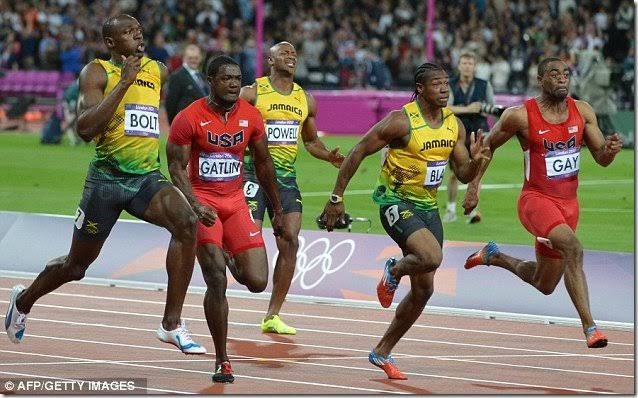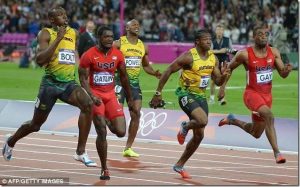
Track and Field: The Ultimate Test of Speed, Strength, and Endurance
Track and field is often considered the ultimate test of athletic ability. Its versatility, broad range of events, and emphasis on raw, measurable performance make it unique among sports. The sport is divided into running, jumping, and throwing events, each demanding distinct physical attributes.

It is a place where athletes can showcase their speed, strength, and endurance, pushing their limits in a variety of disciplines. The combination of physical prowess and mental toughness required to excel in track and field makes it one of the most exhilarating and challenging sports.
Speed: The Thrill of the Sprint
One of the cornerstones of track and field is speed, best represented in the sprinting events. Sprinters compete in races ranging from the 60-meter dash in indoor competitions to the grueling 400 meters outdoors. These races are often over in a matter of seconds, but during that brief moment, an athlete’s explosiveness, form, and quickness are tested to the extreme.
The 100-meter dash is the most iconic of the sprinting events, often seen as the ultimate display of pure speed. At the professional level, sprinters like Usain Bolt have redefined the limits of human performance, with Bolt setting world records that seemed impossible just a generation ago. However, the science of sprinting isn’t just about having fast legs—it’s about perfecting every inch of the race. From the explosive start out of the blocks to maintaining top speed through the final stretch, sprinters must have impeccable technique and conditioning to succeed.
In addition to the solo sprint events, relays such as the 4×100 meters combine individual speed with teamwork. Each runner’s ability to execute a flawless baton handoff is as crucial as their raw speed. These events highlight the synergy between fast athletes and precise timing.
Strength: The Power of the Throws and Jumps
While speed is crucial, strength also plays a significant role in track and field. Strength is tested most notably in the throwing and jumping events, where athletes need to generate power, precision, and explosive force.

In the throwing events—such as the shot put, discus, javelin, and hammer throw—the athletes use their strength to propel a heavy object as far as possible. These events require a combination of explosive power, technique, and focus. Take the shot put, for example: the athlete must push a heavy, solid ball as far as possible, and to do so, they need to generate enormous strength through their legs, core, and arms. Similarly, in the javelin throw, athletes use a mix of speed and strength to launch a spear-like object across the field. Mastery of form and technique is essential because a slight error can cost valuable distance.
The jumping events—long jump, high jump, and pole vault—are also incredibly demanding in terms of strength. Long jumpers must generate enough speed on the runway to leap as far as possible while maintaining perfect form in the air. High jumpers need to combine vertical strength with timing and technique to clear a bar that rises with each attempt. The pole vault, in particular, is one of the most physically demanding events, where athletes use a pole to vault themselves over a high bar, requiring not only strength but also precision in the timing of their jump and the flex of the pole.
Endurance: The Test of Stamina
In addition to explosive power, endurance is a defining aspect of track and field, especially in middle and long-distance events. The 800 meters, 1500 meters, and the marathon (or long-distance races) challenge athletes to balance speed with stamina, requiring them to maintain a high pace for several minutes—or in the case of the marathon, several hours.
The 800-meter race is often considered the hardest distance because it requires athletes to run at a fast pace for two laps of the track while maintaining enough energy to finish strong. Runners need both aerobic capacity and anaerobic power, as the event requires bursts of speed mixed with a sustained effort.
The 1500-meter race, often called the “metric mile,” is another endurance test, pushing athletes to run fast while managing their energy for a sustained period. The race strategy is crucial: runners must know when to push hard and when to conserve energy to ensure they have enough left for the final lap.
Finally, the marathon stands as the ultimate endurance challenge in track and field. This 26.2-mile race tests every aspect of an athlete’s stamina and mental toughness. Marathoners have to maintain a steady pace, hydrate, and pace themselves for hours on end, all while contending with unpredictable weather and terrain. The marathon is a true testament to human endurance, requiring years of preparation and discipline.
Mental Toughness: The Unseen Element
While physical strength, speed, and endurance are clearly key to success in track and field, mental toughness plays an equally important role. Every event—whether it’s a sprint, a jump, or a distance race—requires an athlete to push through pain, fatigue, and self-doubt. The mental challenge is perhaps most evident in field events like pole vaulting and high jumping, where the athlete must deal with the pressure of trying to clear higher bars, often in front of thousands of spectators. The ability to overcome fear of failure and maintain focus is crucial.

Track and field athletes often face the challenge of competition not only against others but also against themselves. Personal records are often the biggest motivators, and the pursuit of a better time, distance, or height is what drives athletes to keep improving.
Conclusion: The All-Round Test of Human Ability
Track and field remains one of the most complete and dynamic sports because it tests an athlete’s speed, strength, and endurance in a variety of ways. Whether sprinting down the track, launching a discus, or running a marathon, athletes must push their limits, displaying an incredible combination of physical and mental toughness. The wide range of events ensures that there is a place for athletes with different skill sets, but all athletes share the challenge of seeking their best performance, making track and field a true celebration of human capability.







